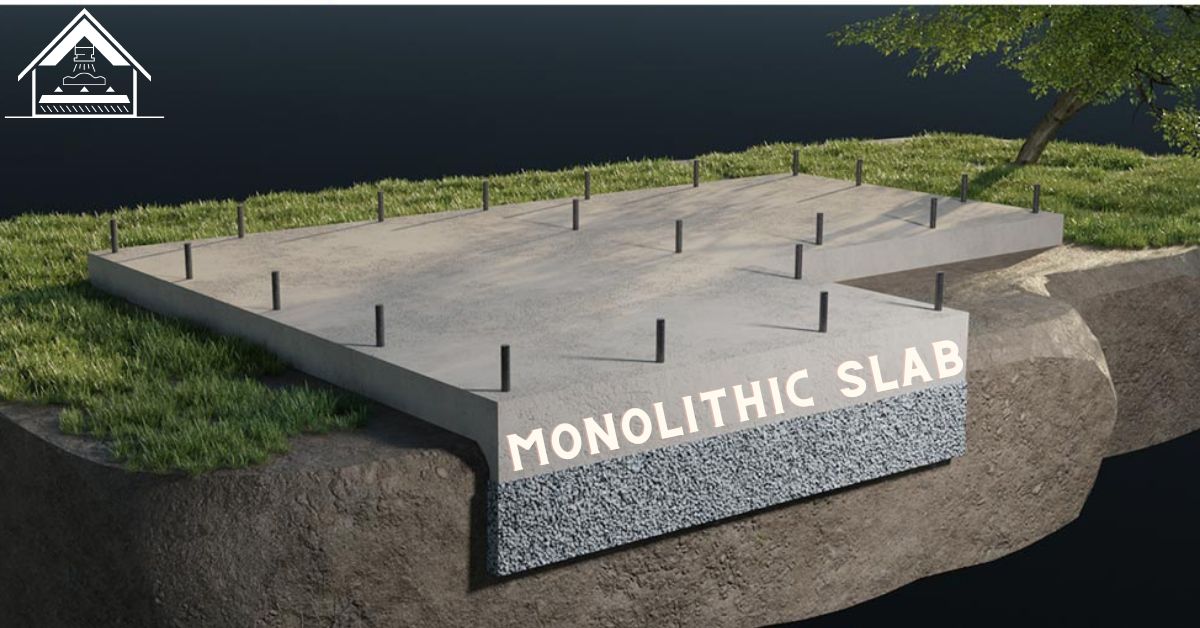Understanding Monolithic Slabs: A Comprehensive Guide
Unsure about the concept of a monolithic slab or how monolithic slab foundations operate? Curious about the advantages and disadvantages they offer? If you’re seeking a concise introduction to monolithic slabs, then this article is your map.
This Blog explains the definition of a monolithic slab foundation, the Construction Process, how it functions and the different advantages and disadvantages related to this specific type of foundation
What is a Monolithic Slab?
A monolithic slab, often referred to simply as a “mono slab,” is a type of foundation characterized by its single, continuous concrete pour. Unlike traditional foundations, which involve separate pours for footings and floor slabs, These slabs are usually poured directly onto the ground, without any separate footings.
They typically have thicker areas of concrete around the edges and under load-bearing walls for extra strength.
The word “monolithic” comes from ancient Greek and means “made of one stone.”
Monolithic slabs are typically 6–8 inches thick and are quite popular in the United States because they’re affordable to install and last a long time. They work well in areas where the ground doesn’t freeze in winter or where temperatures don’t get extremely hot in summer.
Construction Process
Site Preparation:
Site preparation for a monolithic slab foundation involves the initial steps of clearing and levelling the ground to establish a stable base for construction. This process ensures that the site is free from any obstructions or debris that could interfere with the foundation’s integrity. Additionally, the ground is carefully graded to achieve a level surface, which is essential for the proper installation of the slab. Attention to detail during site preparation is crucial as it sets the groundwork for the entire construction process, ensuring that the foundation is built on a solid and secure footing.
Installation of Formwork:
After the site preparation, the next step in constructing a monolithic slab is the installation of formwork. Formwork acts as a mould for the concrete, outlining the shape and dimensions of the slab. It is usually made of wood or metal and is carefully erected to ensure the concrete is poured in the correct configuration.
Placement of reinforcement:
Once the formwork is in place, the next stage is the placement of reinforcement. Steel reinforcement, such as rebar or wire mesh, is laid within the formwork. This reinforcement enhances the slab’s strength and structural integrity, providing additional support to withstand loads and prevent cracking.
Concrete Pouring:
With the reinforcement in place, the concrete pouring begins. Concrete is mixed according to specifications and then poured directly into the formwork. This step involves covering both the footing (the part of the foundation that distributes the load from the structure to the soil) and the floor slab in a single operation. The pouring process requires precision to ensure the concrete fills the formwork completely and evenly.
Finishing Touches:
After the concrete has been poured, the finishing touches are applied. This includes levelling the surface to ensure it is flat and smooth. Special tools may be used to achieve the desired finish, such as a bull float to level the concrete and a trowel to smooth the surface. These finishing touches are crucial for achieving a uniform surface finish and ensuring the structural integrity of the monolithic slab.
Advantages of Monolithic Slabs
- Cost-Effectiveness: Monolithic slabs can be more cost-effective than traditional foundations due to reduced labour and material requirements.
- Faster Construction: The streamlined construction process of monolithic slabs often results in shorter construction times, allowing for quicker project completion.
- Improved Stability: The integration of footings and floor slabs into a single structure enhances the overall stability and load-bearing capacity of the foundation.
- Reduced Risk of Settlement: Since monolithic slabs distribute weight more evenly, they are less prone to settlement issues compared to traditional foundations.
Disadvantages of Monolithic Slabs
- Limited Design Flexibility: Monolithic slabs may not be suitable for all architectural designs or soil conditions, limiting design flexibility.
- Susceptibility to Cracking: In areas with expansive soils or significant temperature variations, monolithic slabs may be more prone to cracking.
- Difficulty in Repairs: Repairing issues such as plumbing leaks or foundation damage within a monolithic slab can be more challenging and costly due to the integrated nature of the structure.
Conclusion
Monolithic slabs offer a practical and efficient foundation solution for many construction projects, boasting advantages such as cost-effectiveness, faster construction, and improved stability. However, they also present limitations and potential drawbacks that must be carefully considered. By understanding the construction process, advantages, and disadvantages of monolithic slabs, construction professionals and homeowners can make informed decisions regarding their suitability for specific projects.
Faqs:
What is the difference between a monolithic slab and a traditional foundation?
Monolithic slabs are characterized by a single, continuous concrete pour, while traditional foundations involve separate pours for footings and floor slabs.
How thick are monolithic slabs typically?
Monolithic slabs are usually 6-8 inches thick, providing sufficient strength and stability for various construction projects.
What are the advantages of using monolithic slabs?
Monolithic slabs offer cost-effectiveness, faster construction times, improved stability, and reduced risk of settlement compared to traditional foundations.
Are monolithic slabs suitable for all types of soil conditions?
While monolithic slabs are versatile, they may not be ideal for all soil conditions. Expansive soils or areas with significant temperature variations may pose challenges.
How do monolithic slabs compare in terms of repair and maintenance?
Repairing issues within monolithic slabs, such as plumbing leaks or foundation damage, can be more challenging and costly due to their integrated nature, highlighting the importance of proper maintenance and inspection.







